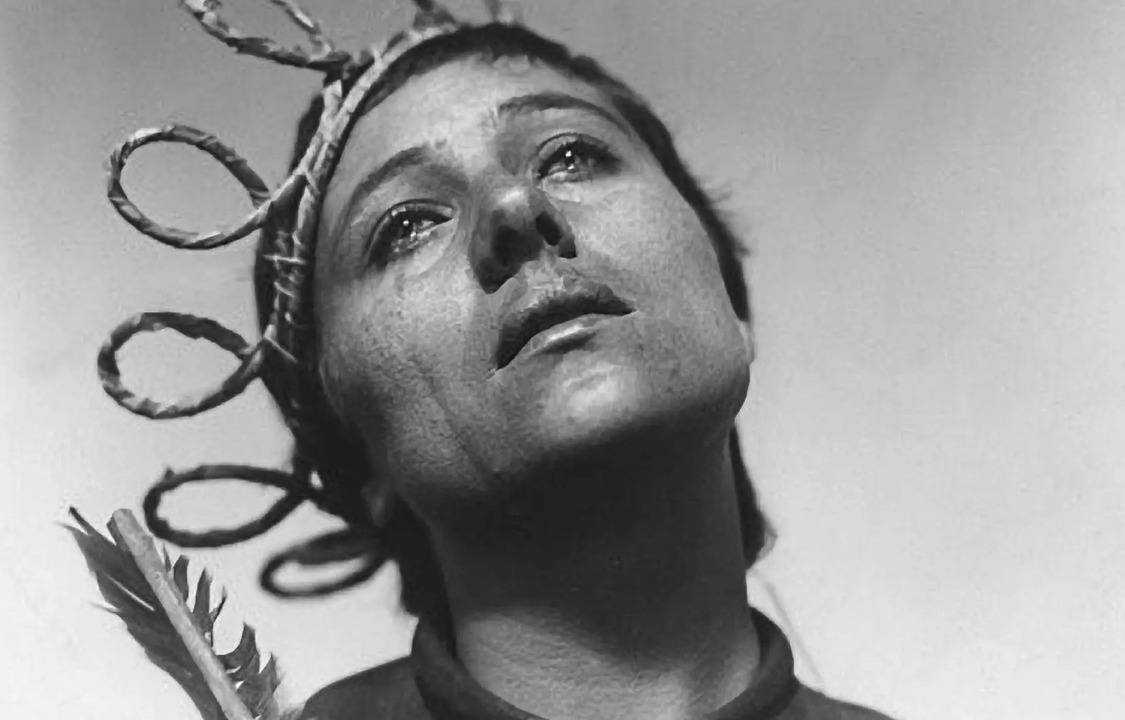Joan of Arc: Heroine, Saint, and National Symbol in the Month of May
 Image courtesy of France Channel, “La Passion de Jeanne d’Arc” (1928)
Image courtesy of France Channel, “La Passion de Jeanne d’Arc” (1928)
Each May, France honors one of its most enigmatic and enduring figures: Jeanne d’Arc, or Joan of Arc. Canonized in 1920 and declared a national symbol, Joan’s legacy transcends the boundaries of history, faith, and politics. Her annual commemoration—celebrated on the second Sunday of May as a national day of homage—offers a unique opportunity to reflect not only on the life of a remarkable young woman, but on the meanings her image has taken on in French consciousness for over five centuries.
Joan of Arc is more than a medieval heroine; she is a prism through which France’s struggles, triumphs, and identity are refracted.
The Life and Mission of a Peasant Girl Turned Warrior
Born around 1412 in Domrémy, a village on the border of Burgundy and Lorraine, Joan was an illiterate peasant girl who claimed to receive divine visions from saints—including Michael, Catherine, and Margaret. These voices, she said, urged her to support Charles VII and expel the English from France during the final stages of the Hundred Years' War.
Against extraordinary odds, Joan persuaded Charles VII to grant her command of an army. In 1429, dressed in white armor and carrying a banner bearing the names of Jesus and Mary, she led the French to a critical victory at Orléans. This triumph, occurring in May of that year, shifted the momentum of the war and led to Charles’s coronation in Reims.
Joan's military leadership was not merely symbolic. Despite her youth—she was only 17—she proved to be a tactician and spiritual motivator, revered by soldiers and feared by enemies. Yet her mission was short-lived. Captured in 1430 by Burgundian forces allied with the English, she was put on trial for heresy in Rouen. Found guilty in a politically orchestrated inquisition, she was burned at the stake on May 30, 1431, at the age of 19.
Martyrdom and Rehabilitation
Joan’s death did not mark the end of her story, but the beginning of her transformation into myth. In 1456, a posthumous retrial under the authority of Pope Callixtus III declared her innocent and a victim of judicial murder. Her reputation began to shift—from heretic to martyr, from political pawn to national icon.
Over the following centuries, Joan's image was constantly reinterpreted to reflect the times. In the 19th century, Romantic painters and nationalist writers cast her as the ideal embodiment of French valor and virtue. The Catholic Church, particularly under ultramontane influence, emphasized her saintliness and Marian purity. By the early 20th century, amid deep national divisions following the Dreyfus Affair, Joan became a unifying symbol for both secular republicans and conservative Catholics.
Her canonization in 1920—shortly after World War I—resonated deeply with a France battered by trauma and searching for resilience. In Joan, many saw a patron saint not just of lost causes, but of national endurance.
A May Tradition: National Homage and Local Festivities
In 1920, the same year as her sainthood, the French Parliament declared a national day of homage to Joan of Arc, to be celebrated on the second Sunday in May. While not a public holiday, the day is marked by civic and religious ceremonies across the country, especially in Orléans, where Joan’s victory is reenacted in elaborate medieval pageantry. Costumed parades, Masses, and historical commemorations fill the city with a sense of pride and reflection.
This annual homage serves multiple functions. It honors Joan's personal sacrifice, her faith, and her national significance. It also allows communities—especially in central France and the Lorraine region—to engage with living history. In an era of political polarization and cultural uncertainty, Joan remains a figure capable of transcending ideological divides, celebrated by monarchists, republicans, feminists, and traditionalists alike.
Joan as National Archetype: Faith, Resistance, and Identity
Joan of Arc occupies a singular place in French consciousness. She is at once a saint, a soldier, and a citizen—representing the triad of French ideals: faith, courage, and nationhood. Her femininity complicates and enriches this symbolism. In a society where women’s roles were circumscribed by rigid norms, Joan took on armor and command—defying both gender and class expectations.
As modern historians have noted, Joan's gender has played a key role in her legacy. She is often viewed as a proto-feminist, though she herself did not challenge the patriarchal structures of her time. Still, her independence, martial prowess, and spiritual conviction make her an enduring model of female agency and transcendence.
Joan has also been embraced as a symbol of resistance during France’s darkest hours. During the German Occupation in World War II, both the Vichy regime and the French Resistance invoked her name—proof of her ambiguous and potent symbolism. For Charles de Gaulle, she epitomized the soul of France: proud, unyielding, and touched by grace.
Joan in Our Time
Each May, as the memory of Joan’s triumphs and her tragic death is honored anew, the French are reminded not just of a national heroine, but of their own complex history—marked by civil conflict, resilience, and a search for meaning. Joan of Arc’s story is neither static nor purely historical. It is an evolving narrative that mirrors France itself: shaped by conviction, tested by fire, and endlessly reinterpreted across generations.
Joan lives on in statues, literature, film, and political discourse. But perhaps her truest legacy is this: the enduring belief that a single voice—humble, impassioned, and unrelenting—can change the course of a nation.